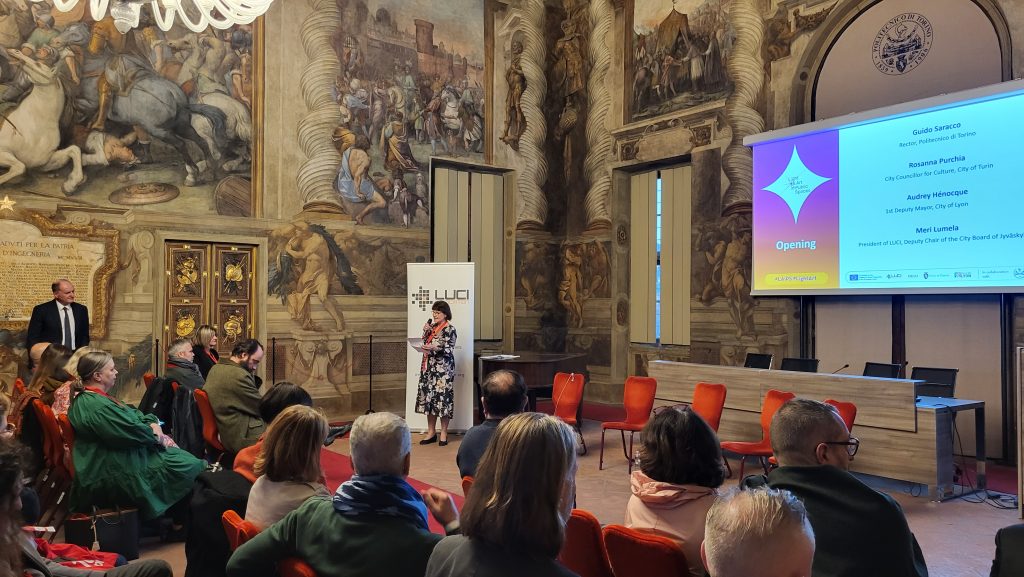Bringing Life to Public Spaces with Light Art
Bringing Life to Public Spaces with Light Art
LUCI members and guests assembled in Turin last week to celebrate the completion of the Light & Art in Public Spaces (LAiPS) EU co-funded project through the Bringing Life to Public Spaces with Light Art international conference and to launch to Light & Art Map. The conference coincided with the 26th edition of the Luci d’Artista light festival and delegates took the opportunity to see the installations – all of which appear within the online map!
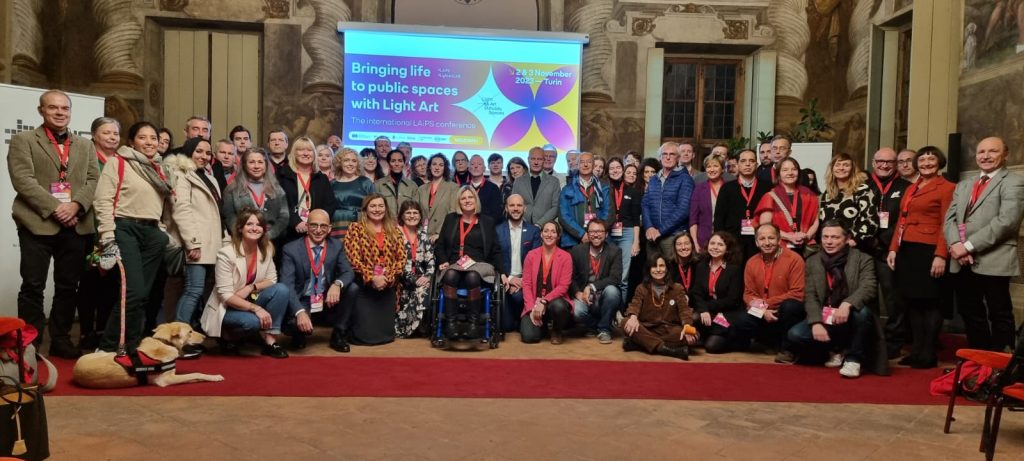
The LAiPS project and conference were a living reaffirmation of the LUCI Declaration with a focus on finding enduring and interdisciplinary public-private solutions to the challenges of maintenance, environmental impact and good governance.
Launching the Light Art Map
LUCI President Meri Lumela cut the red ribbon in Turin to mark the launch of the LUCI Light & Art Map. This digital tool becomes the legacy of the LAiPS project to build awareness about light art in cities for residents, tourists and cultural operators and gives everyone the chance to explore online and on foot the remarkable array of light art in seven European cities.
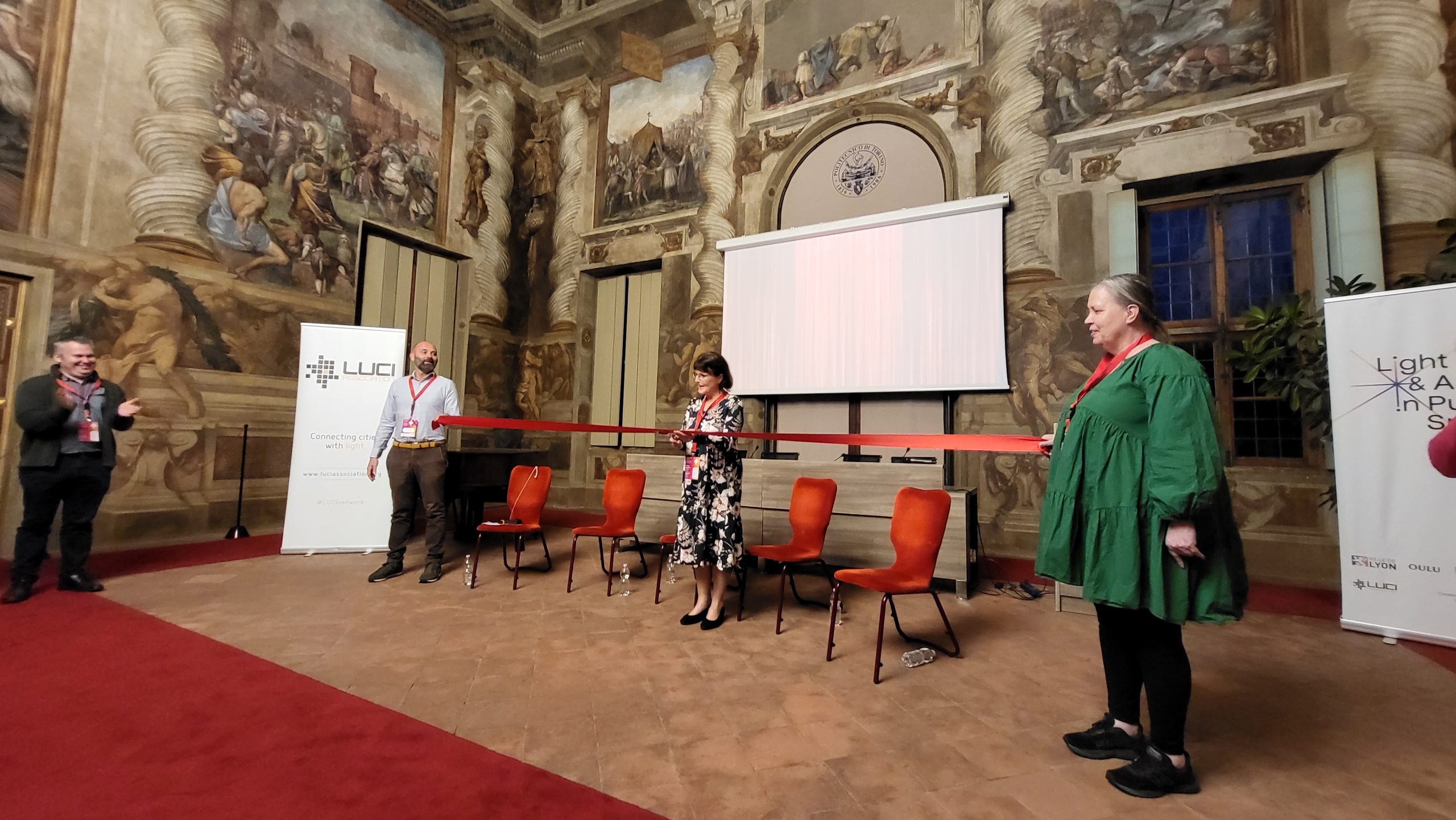
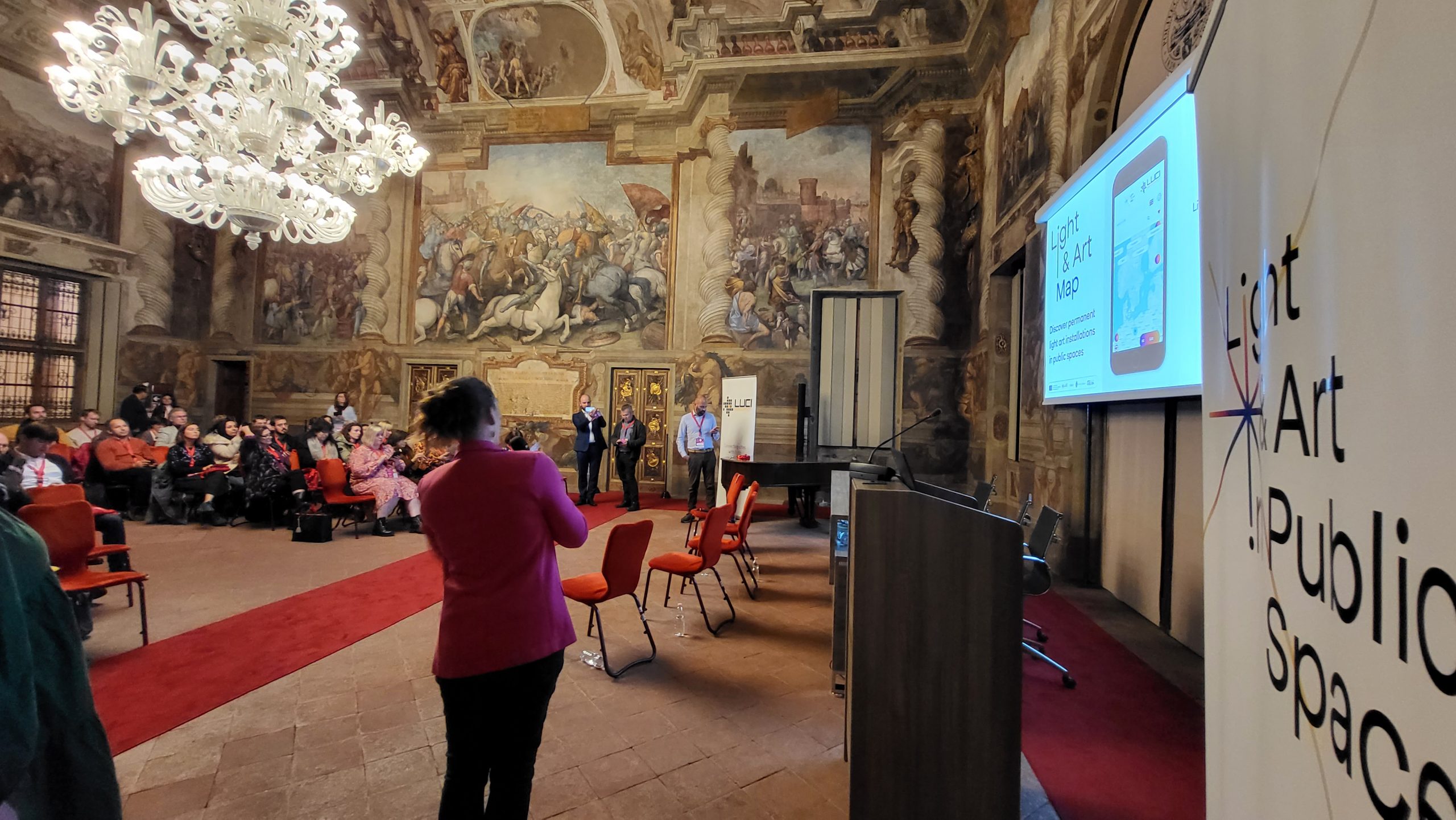
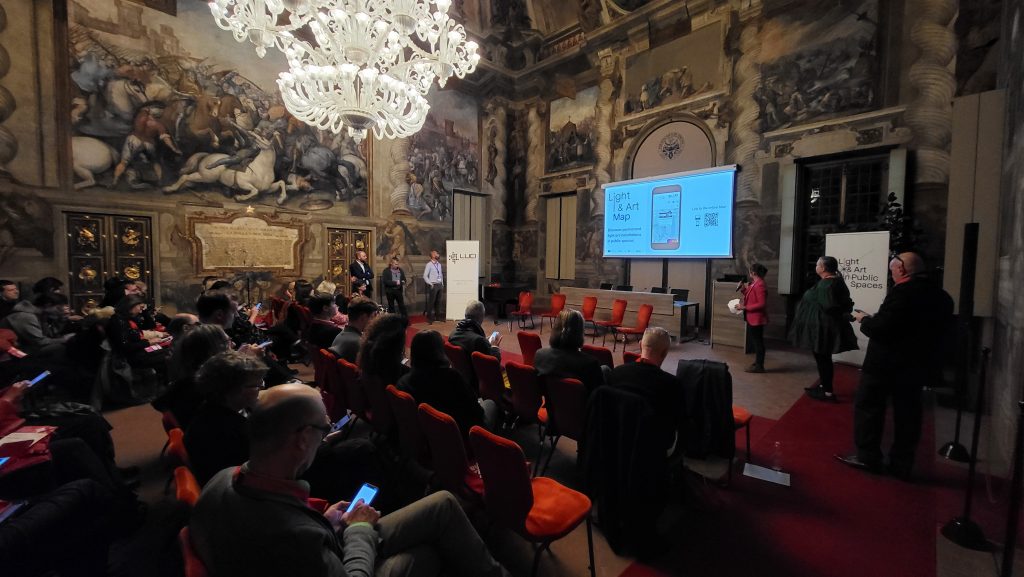
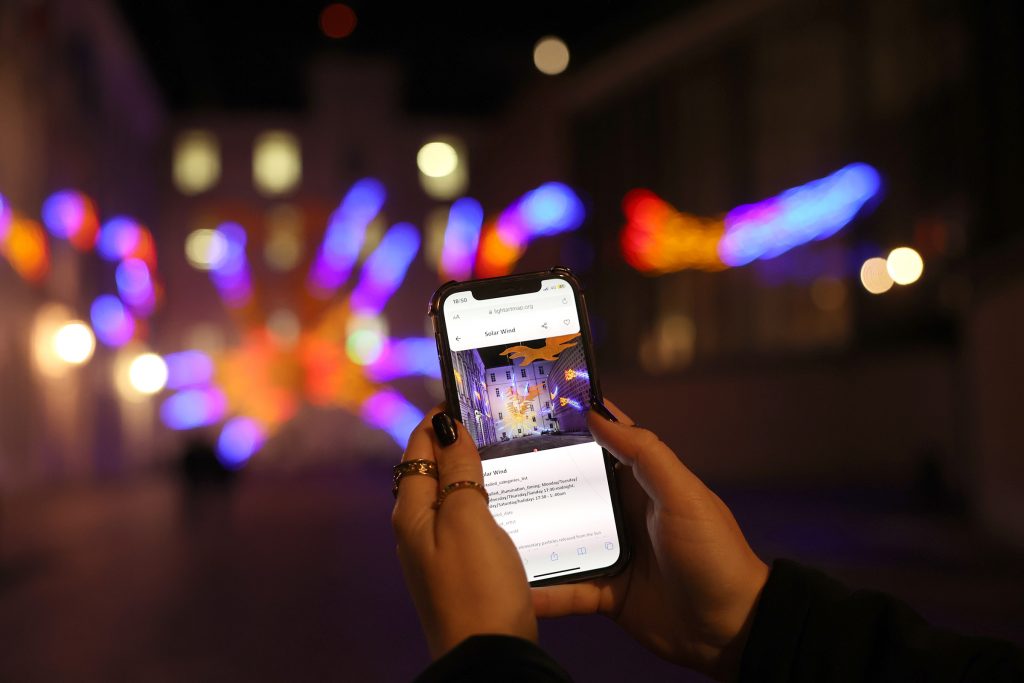
The Light & Art Map will continue to grow with more LUCI cities being included on the map in the future. For now, you can discover or re-discover these cities in a new light – at night, with over 90 light art works in the seven cities of Amsterdam, Eindhoven, Jyväskylä, Lyon, Oulu, Rotterdam, and Turin.
Want to put your city on the Light & Art Map? Contact luci@luciassociation.org to find out more about becoming a LUCI member.
Marking the conclusion of the LAiPS project
Representatives from the project partner cities of Oulu, Lyon and Turin began the conference by sharing their key lessons from the project during a roundtable session. Over the last three years, each city had participated in a series of four Light Art Labs (with affiliate cities Rotterdam and Amsterdam hosting the fourth Lab in April 2023).
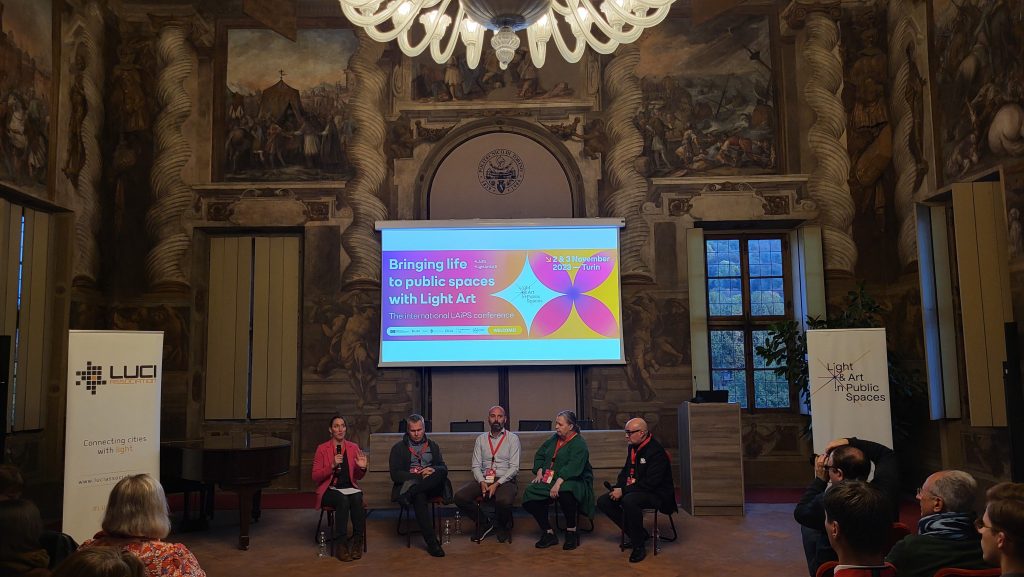
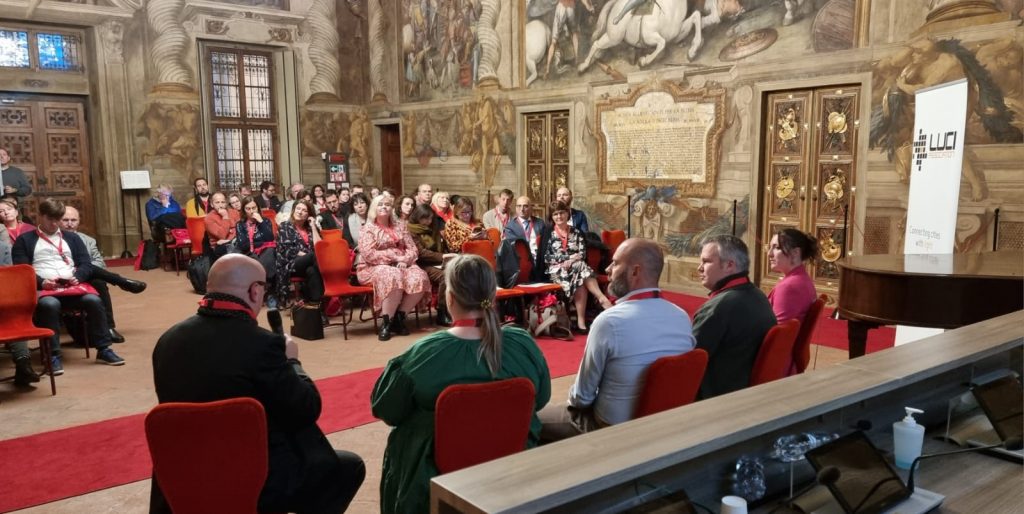
Frédéric Durand from the City of Lyon outlined his desire for light art to be around for the long term. This means engaging with the individuals or agencies that will be responsible for maintenance: not just in the moment of construction and installation but in the longer term. Those people need to be integrated into the project from the very beginning in order to ensure the longevity of the works.
Leena Pälli from the City of Oulu described the particular conditions for light art in Finland – lots of darkness and low temperatures for half of the year! Learning about the audience engagement in Lyon (especially their work with vulnerable groups) was inspirational and will be a key part of her efforts to get more support for light art among her colleagues in the municipality.
Matteo Scainelli from the City of Turin expressed a particular concern for sustainability, given that Luci d’Artista uses artworks that are now 25 years old and therefore is no longer the latest or most energy efficient technology. There is a careful conversation ahead for everyone in LUCI, involving stakeholders from artists, planners, policy makers, and elected officials about a transition to more sustainable technologies and materials.
Taking the project forward
The cities of Oulu, Lyon and Turin came to the LAiPS conference with a set of questions for the delegates. The 2-hour IDEATHON interactive session on the second day was the opportunity for participants to come together and work through ideas and suggest solutions to the cities’ questions.
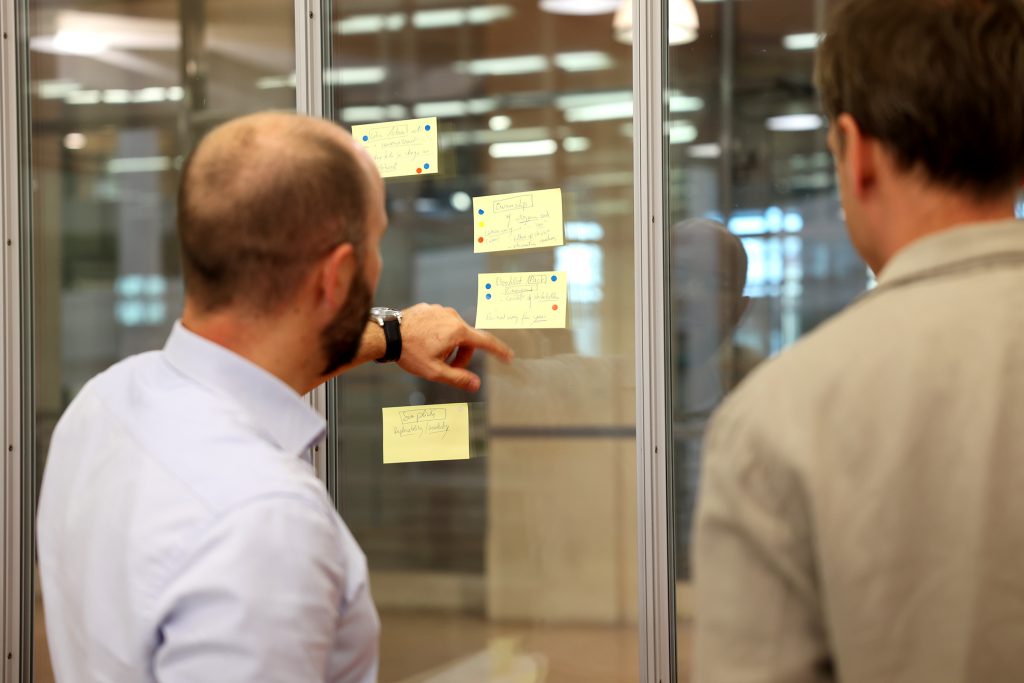
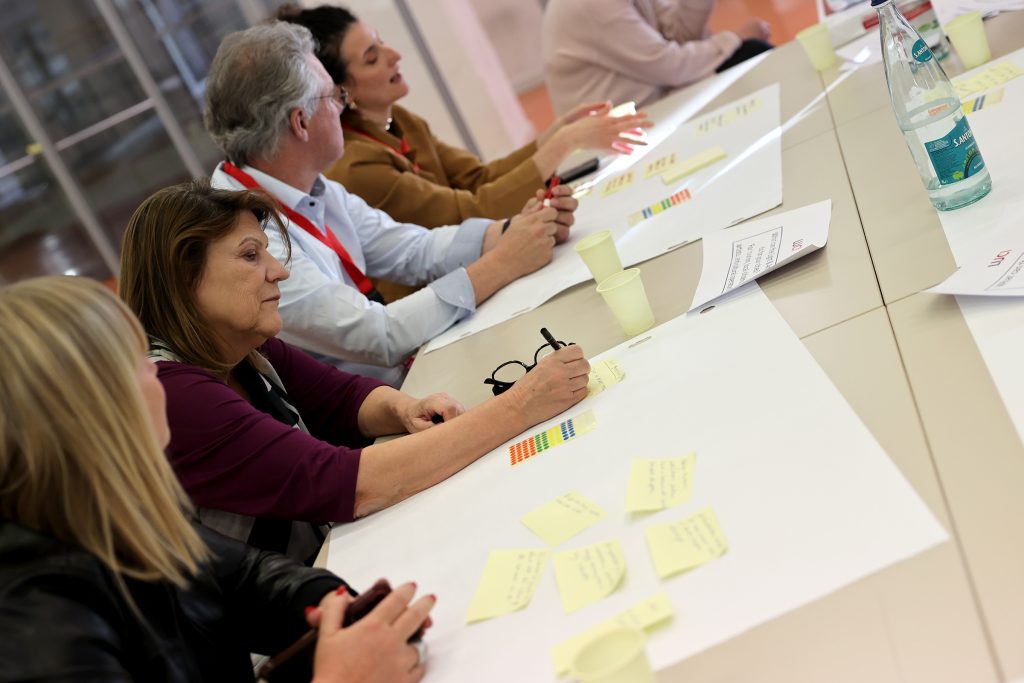
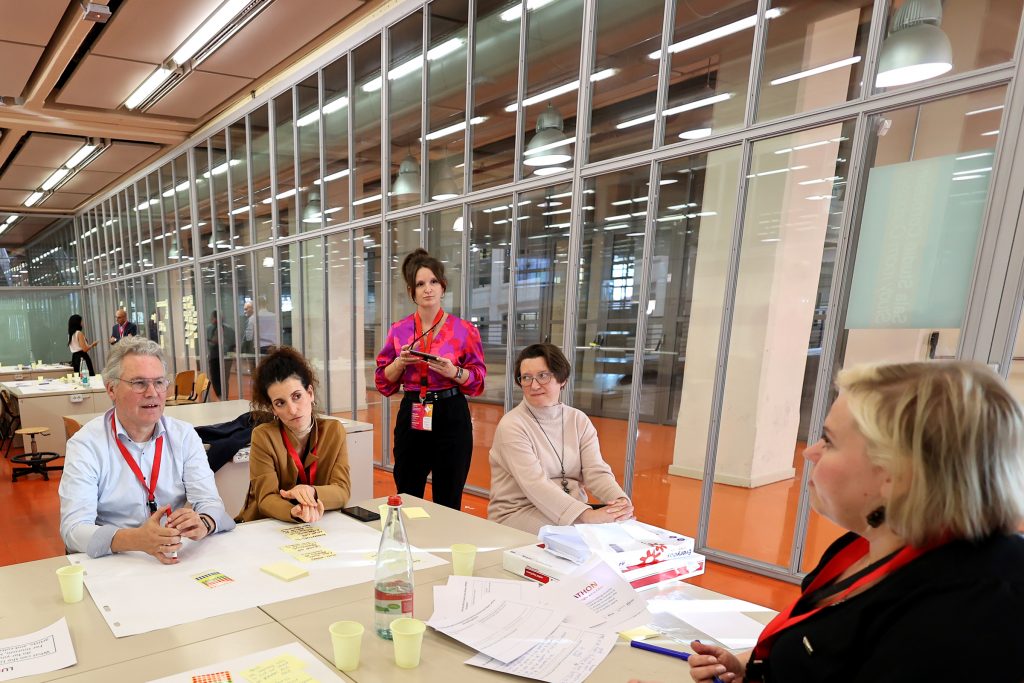
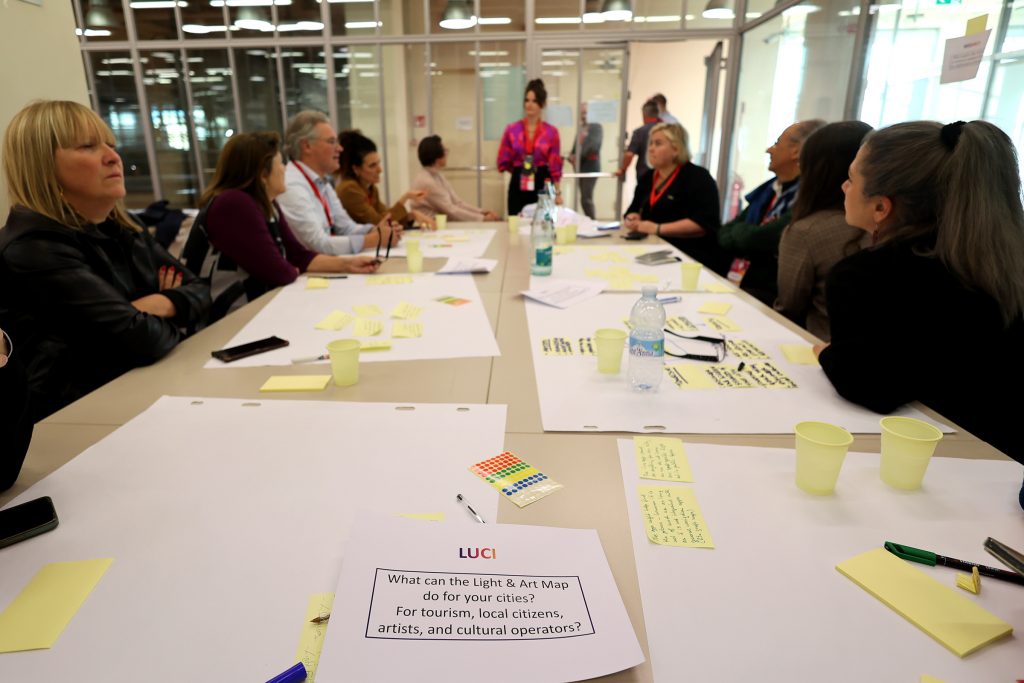
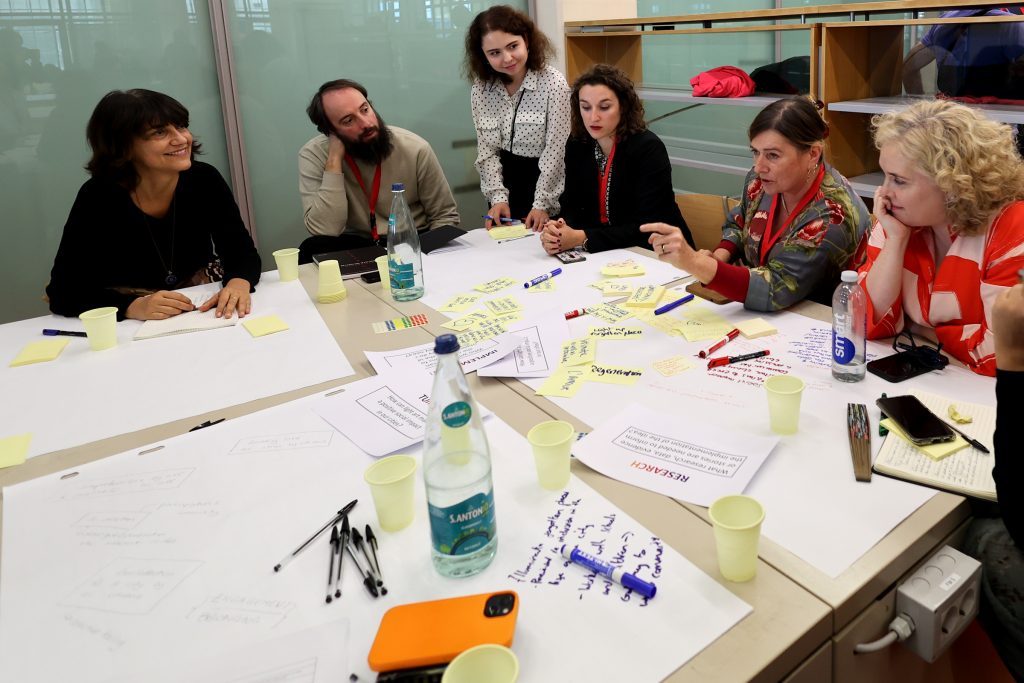
Oulu asked the question: “How can we realise the vision of the light artist given the technical and political challenges of lighting a city landmark?” and the IDEATHON explored possible solutions relating to a new light art school that was oriented around the work and interests of young people in the city.
Lyon tasked their group to answer the question: “How can we ensure the long-term maintenance of light art in our cities?” and the solutions were found in a proper approach to governance in which the city took ownership and responsibility for maintenance according to a specific timeframe determined early on with the collaboration of artists, community and commercial stakeholders.
Participants at the Turin table considered the question: “How can light art make a positive social impact in our cities?”The group concluded that it is most important for a city to be loved and this affection can be expressed through light art by using people’s streets, homes and windows rather than isolated spectacular events.
LAiPS Talks from artists, researchers and cultural leaders
The LAiPS Talks moment was a chance to hear from diverse perspectives on how light art animates public spaces: from the light artist point of view to academic research and district-wide use of light as identity of place.
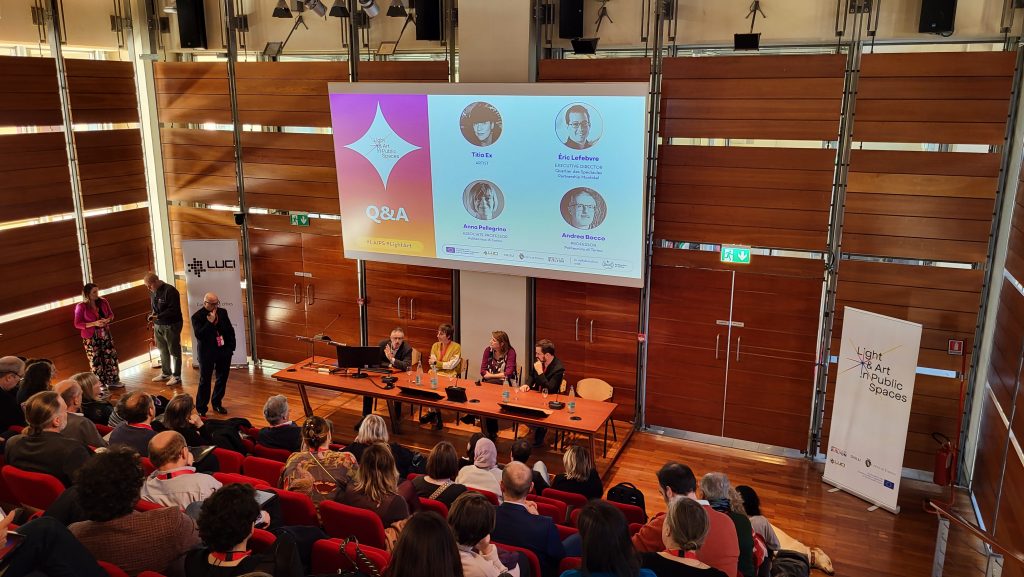
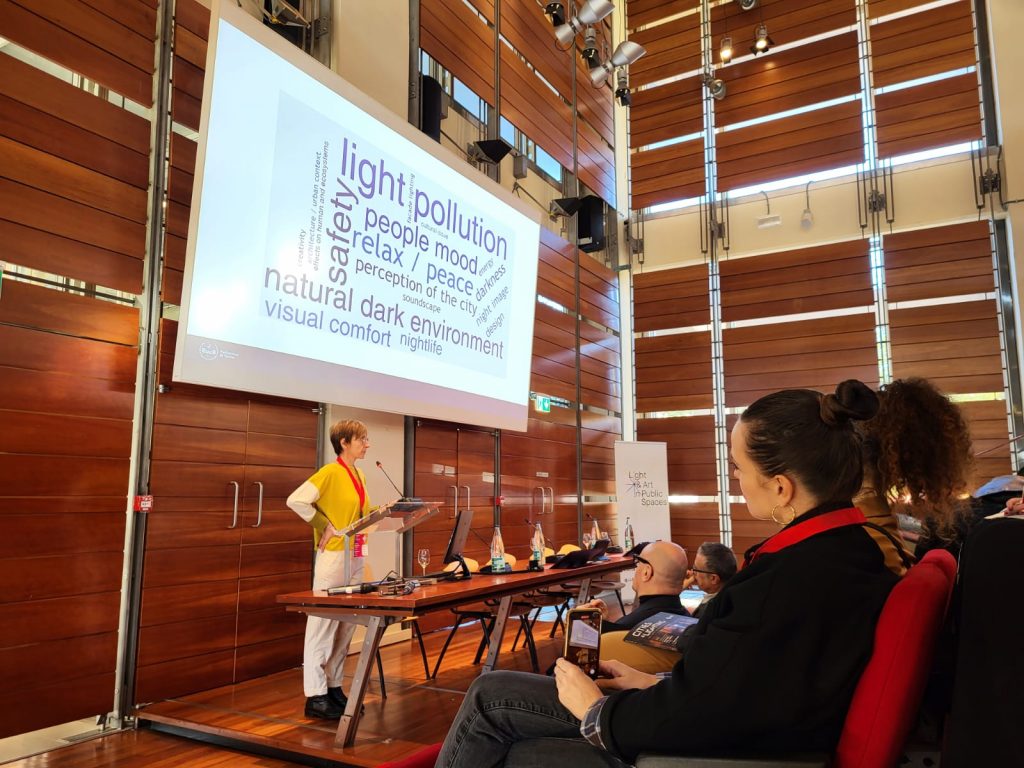
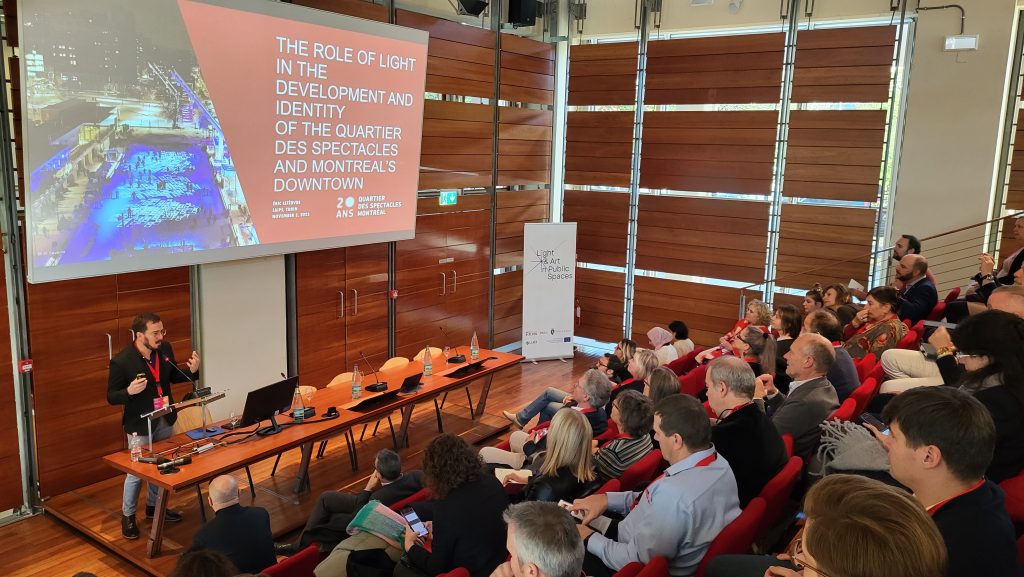
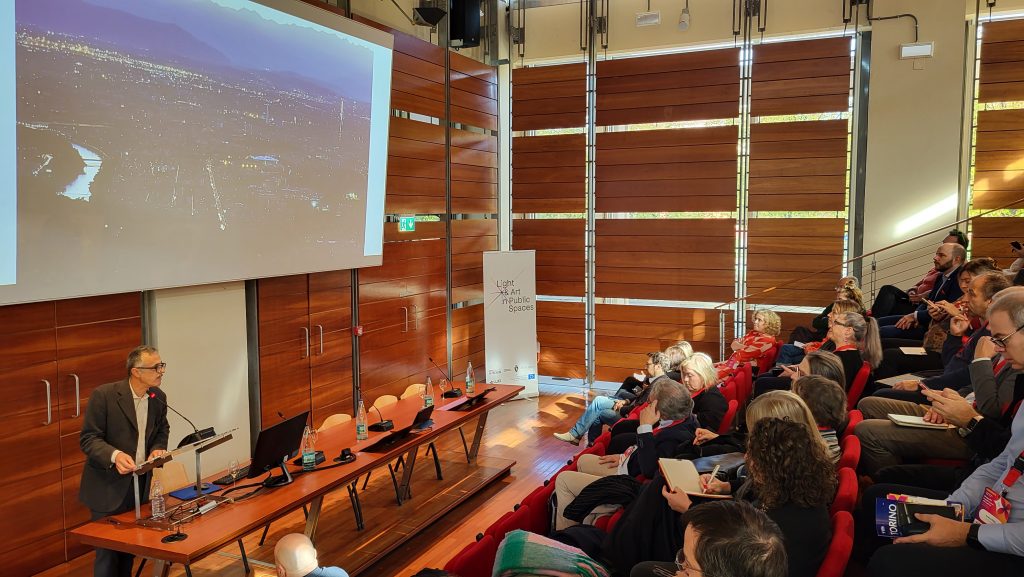
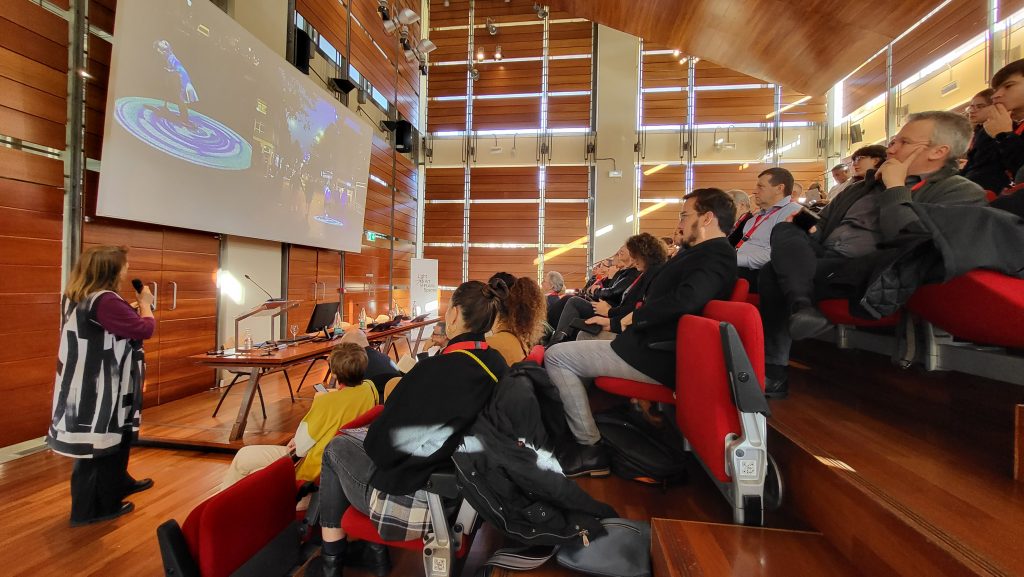
Artist Titia Ex showed how light art can enhance the continuous process of interaction between people, our environment and the cycle of day and night. Light art can also be a powerful way to induce a new relationship with places – inviting people to visit, to linger, o be surprised and delighted. Works such as Juicy Lights in Amsterdam is an installation which was designed to drip light into the street – the work itself shaped like a succession of hanging grapes. While it is a light installation during the dark hours, it remains a sculpture designed to have an impact in the daytime.
Professor Andrea Bocco from the Department of Regional and Urban Studies and Planning at the Politecnico di Torino offered a reading of the centre/periphery dynamics in Turin during the Luci d’Artista festival. In Turin, there is a longstanding geographic inequality. The historic centre and the hillside areas are richer, healthier, and better educated than the other suburbs in the city. The bias among tourists and the tourism sector in the city is also to focus on the historic centre. In some ways Luci d’Artista has reinforced the geographical inequalities by placing the prestigious works in the city centre. To overcome inequality we need to see beauty in places that do not conform to the piazza and boulevard design system – to create works of light art which grow out of the “awkward” and peripheral places.
Éric Lefebvre, General Director of Quartier des Spectacles Partnership in Montreal, described how light and light art are used to bring coherence and unity within the district and keep streets alive between festivals and major events. The management of the district is undertaken as if it were an outdoor performance venue – using all the techniques and technologies of a performing arts arena but doing so in the open air with built-in infrastructure such as a fiber optics network to “plug and play.” In order to be distinct and coherent, red light “dots” have become the “signature” of the district, appearing on all of the venues in the district. Facades in the district are used as permanent projection surfaces and canvases for the display of light art. They are now working across the city to support efforts for a city-wide lighting strategy and will discover whether the achievements of the district can be replicated at scale.
Dr. Anna Pellegrino from the Department of Energy at the Politecnico di Torino explored the concept of “nightscape” and discovered that it predominantly relates to safety and street lighting. People used to think that “more light = more perceived safety” but research is proving that what matters is the quality of design and the integration of light within the nightscape. Anna shared some examples of creative modifications to traditional and functional street lighting in order to improve safety while also enhancing the interest or distinctiveness of a place. Another theme of “nightscape” is light pollution – particularly the need for darkness and the important role that it has for the wellbeing of all animals: not just humans.
Key message from the keynote talk
The keynote speaker for the LAiPS conference was Dr. Cara Courage – a global expert in placemaking. Cara fed the conference with lots of provocative and clarifying ideas while presenting placemaking projects from all over the world.
Placemaking may have eluded a crisp definition, but it will be something familiar to everyone in LUCI. In Cara’s view, placemaking is an approach or a set of tools that puts community “front and centre” to determine the look and function of a place. Invitation is not sufficient – communities must be welcomed, respected, and acknowledged.
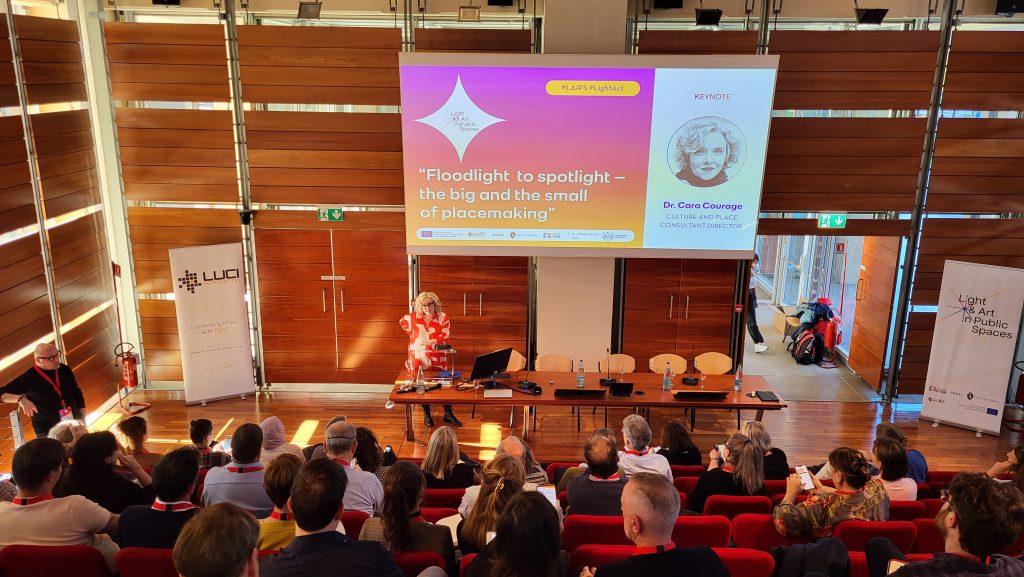
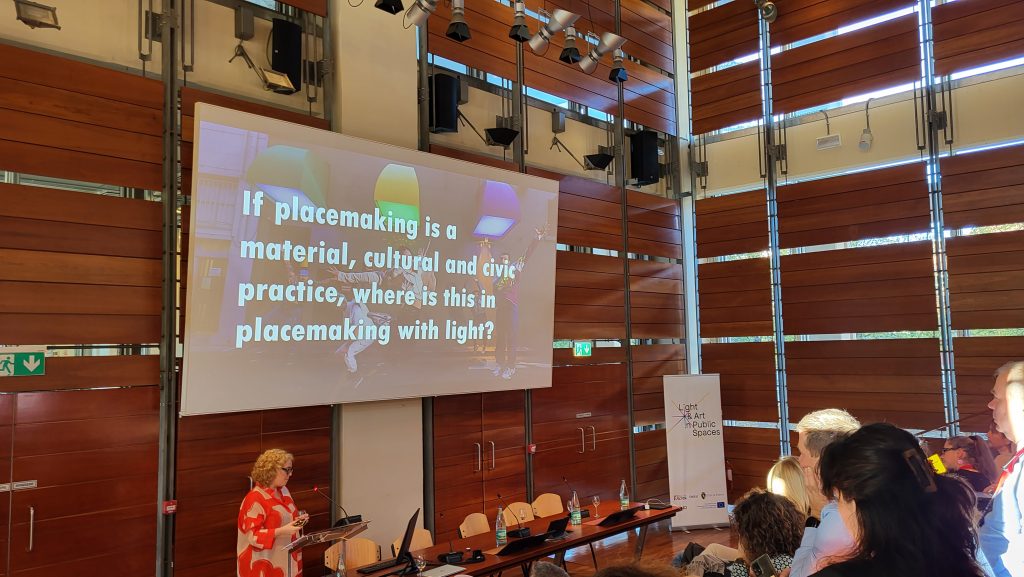
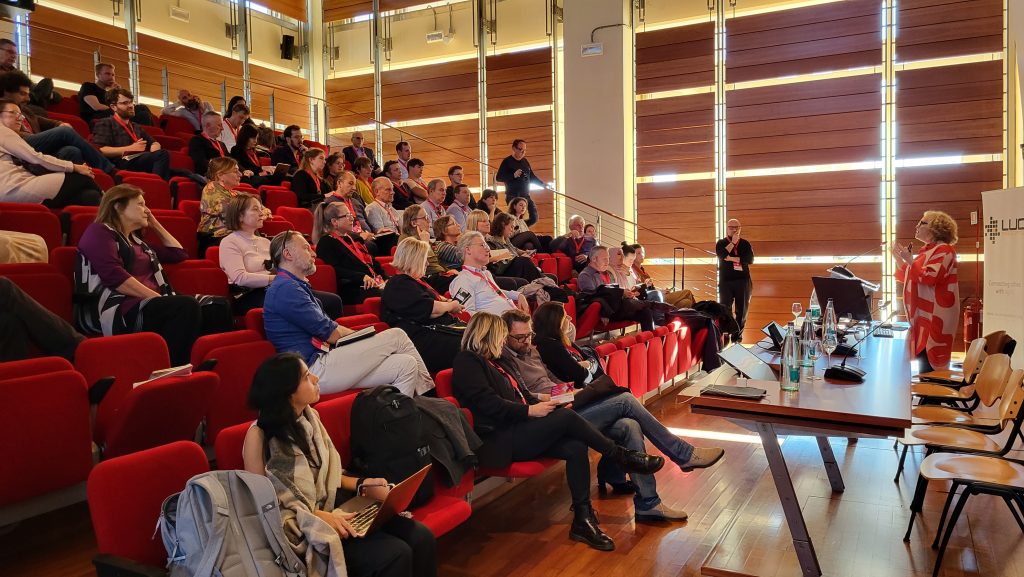
Truly successful examples of placemaking result when placemaking professionals have the cultural competence to recognise the diversity and tensions that live within a local community. Artists can be true experts in this, and art can be the arena in which difficult conversations can take place.
Cara concluded her presentation by connecting her area of expertise to the conference’s key theme of light art, stating that there is a sense that “placemaking seems to stop when the sun goes down”. If light art were to be more integrated into placemaking projects, then it would need to take account of the changing nature of places as they move through the day-dusk-dark-dawn-day cycle. “Nocturnal placemaking” is a term that is taking hold and there could be a role for light art in that movement – given that it chimes so well with the core elements of the LUCI Declaration such as community engagement and environmental sustainability.
Experiencing the conference within Turin’s cultural gems
Throughout these two days, the conference offered examples of how light art in public space becomes successful through community participation and active emotional engagement. We would like to give a special thanks to our hosts, the City of Turin and Politecnico di Torino for the opportunity to come to these conclusions in their unique venues. The opening session began in the elegant surroundings of the Politecnico’s Castello del Valentino and the entirety of the next day within their impressive Lingotto campus embedded in the old Fiat car factory complex.
Participants were also awestruck by the dinner venues, where the City of Turin hosted us in the Hall of Kings of the world-renowned Egyptian Museum the first night and in the breathtaking historic Palazzo Madama for the second night. Grazie to our hosts!
©Gianluca Platania ; ©LUCI Association

